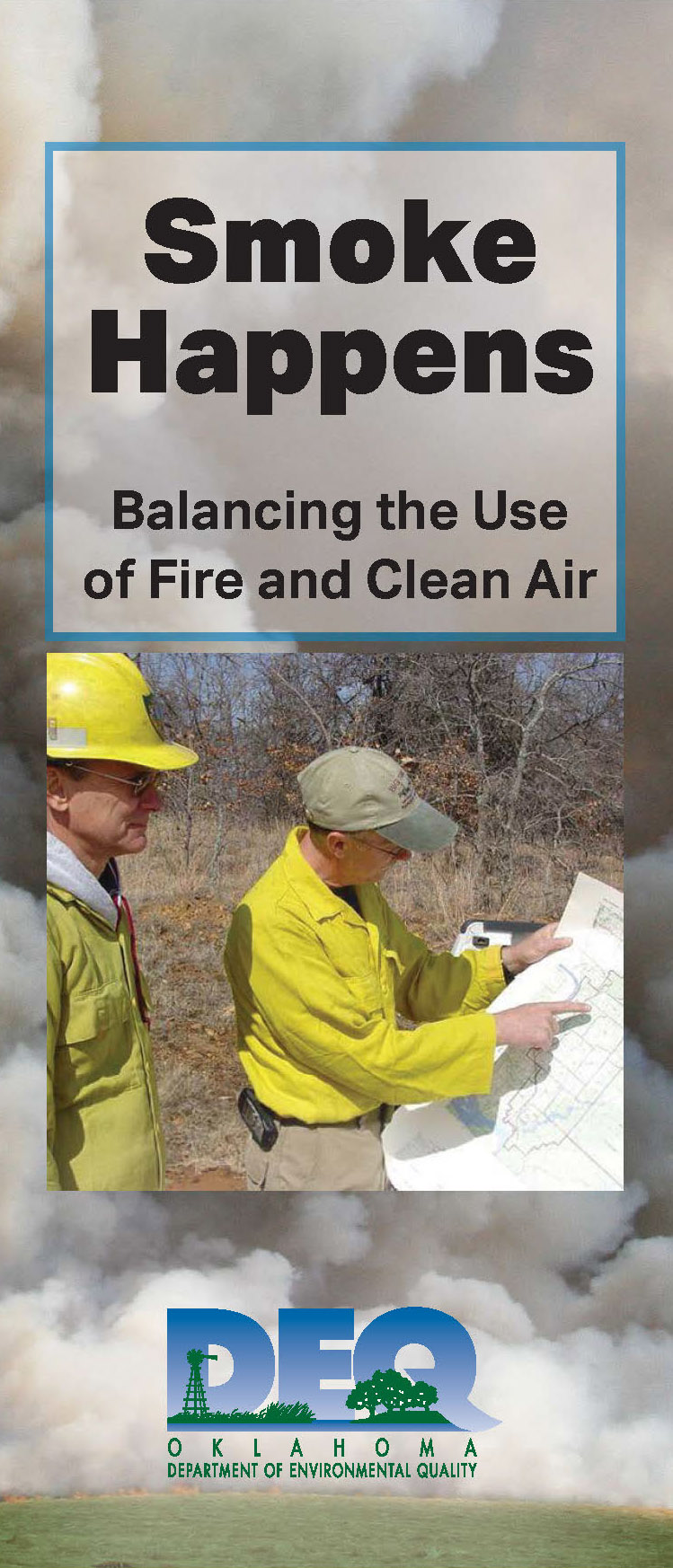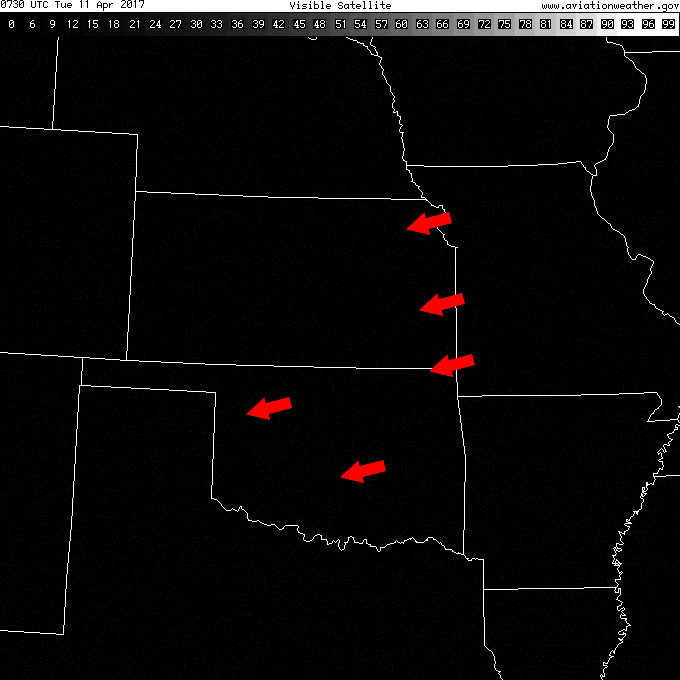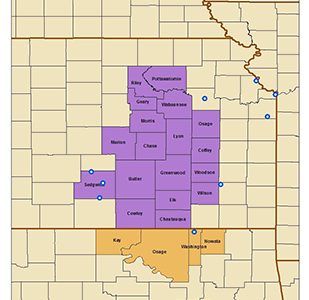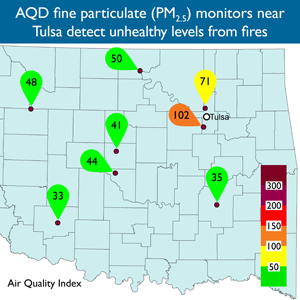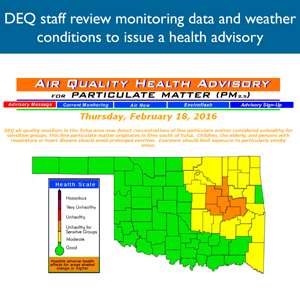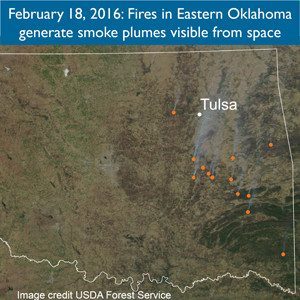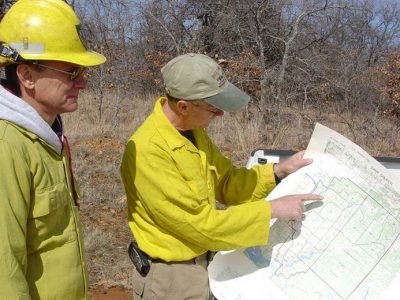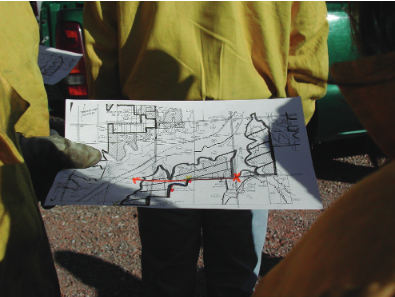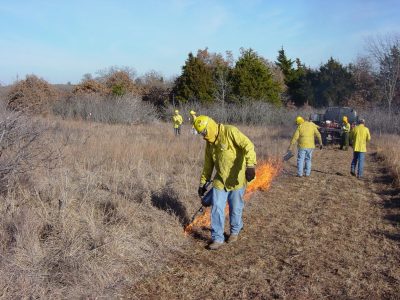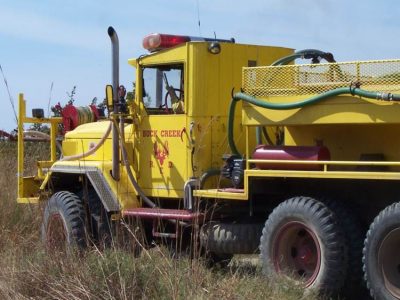Where there’s smoke…
DEQ’s open burning rule allows the use of fire for land management operations (OAC 252:100-13-7) if procedures recommended by the Oklahoma Department of Agriculture, Food, and Forestry (ODAFF), the Oklahoma Department of Wildlife Conservation, and the US Forest Service are followed. Prescribed burning is the strategic application of fire by an experienced fire crew to a predetermined area for land management.
DEQ worked with Oklahoma Forestry Services (OFS), a division of ODAFF, to develop a Smoke Management Plan (SMP) to protect the health and welfare of Oklahomans from the impacts of smoke from wildland and prescribed fire. The SMP is designed to protect public health and safety, minimize smoke intrusions, and meet state and federal requirements.
The SMP was updated in collaboration with ODAFF and input from stakeholders during a public review comment period ending May 12, 2021. The final updated documents were submitted to EPA on July 14, 2021, and can be found below:
- Smoke Management Plan (Updated June 2021)
- Response to Comments
Prescribed Burning is a Land Management Tool
Historically, Oklahoma’s landscape has been shaped by many processes. Fires caused by lightning promoted cross-timbers and tallgrass prairie habitats. Recognizing the benefits of fire on the land, Native Americans began a practice of periodic burning. However, for over a century, fire suppression was encouraged by society and resulted in fuel buildup and the spread of invasive plant species. Unhealthy forests and prairies led to large catastrophic wildfires, loss of wildlife due to unsuitable habitats, loss of tourism, and insect infestation of vegetation and animals.
To combat detrimental impacts, landowners began to utilize prescribed fires. Prescribed fire is an effective, low-cost land management tool essential to the restoration and perpetuation of native plant communities and the wildlife that inhabit them. Also, prescribed fire helps decrease the severity of wildfires by reducing available fuel.
Fire frequency is key to land management.
Burn frequencies: A – no burn, B – three-year, C – two-year, D – one-year
Fire frequency is key to land management.
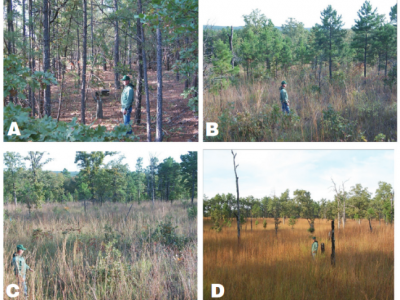
Images credit Oklahoma State University


